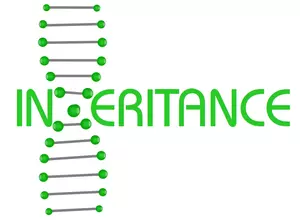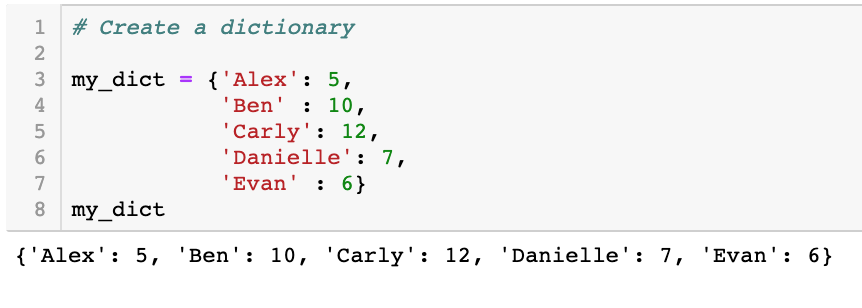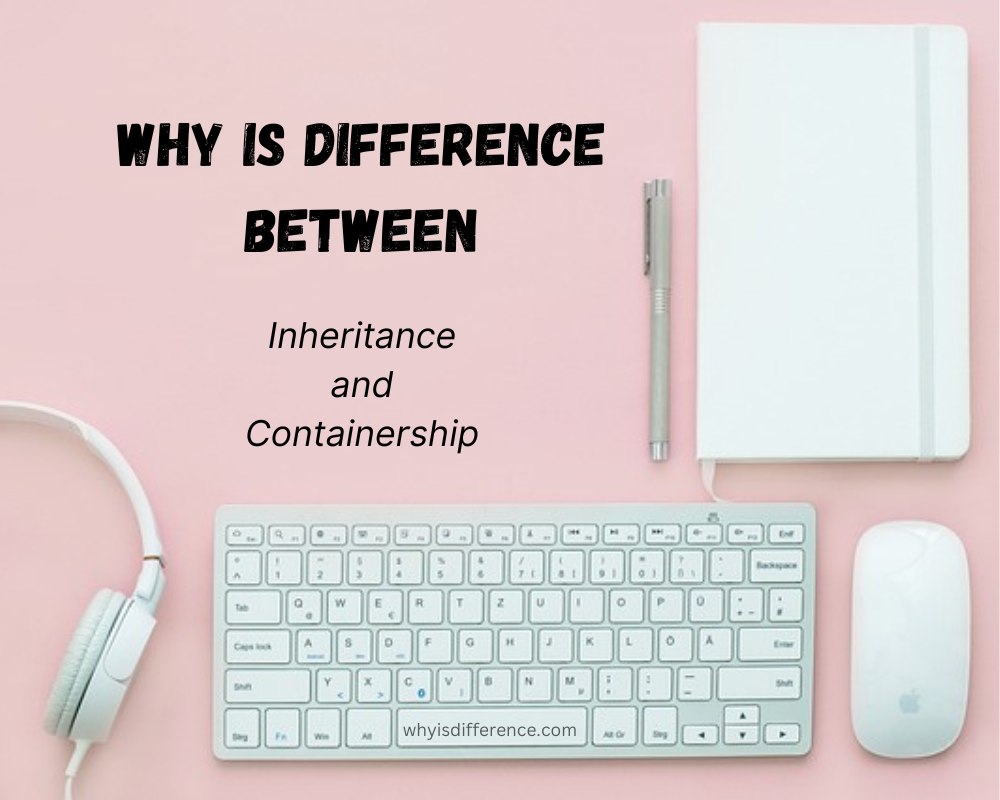Inheritance and Containership: OOP (Object Oriented Programming Examples- C ++) involves two key concepts – inheritance and containership. They both work by adding extra properties or behaviors to classes- inheritance allows one class to inherit properties or behaviors from its parent class while Containership refers to being able to include objects from different classes as members in one.
What is inheritance?

As discussed previously, inheritance is the ability of classes to take on some or all of their parent class’s behavior and properties by expanding it. Inheritance is a useful method of code reuse by enabling you to extend an existing class by creating new ones with their properties and behaviors extended.
If class A extends B, B is known as its mother or superclass while A is its child or subclass that was derived from it. When inheriting all attributes and methods from its superclass (B), A will inherit them all as protected and public attributes from B, and the same for methods.
Subclasses have the ability to override (provide additional or enhanced capabilities in methods) any behavior inherited from their parent classes. OOP defines inheritance as an “is-a” relationship – this simply means that A is A. Also, B could refer to an entity in real life while A denotes specificity; for instance, in real-world programming problems the Person class can expand into the Employee class for further specialization purposes – this process is known as specialization.
However, you could create a class for Employee before generalizing it into the Person class (i.e. generalization). In this instance, Employee will possess all of the attributes and behaviors found within people (so it could also be considered human beings) while including additional features that distinguish it from people such as employees status or additional functions that make the Person different than its Employee equivalent.
There are different types of inheritance:
- Single Inheritance:
A single inheritance occurs when a class inherits all features and procedures from its single parent class. - Multiple Inheritance:
With multiple inheritance, classes are created by merging multiple parent classes together and inheriting their characteristics and techniques from them. Multiple inheritance support can be found in several object-oriented programming languages but not all. - Multilevel Inheritance:
With multilevel inheritance, classes are created through inheritance from one class into another class. The new class then inherits every property and method from both its parents as well as those inherited from its grandfather class.
Advantages and Disadvantages of Inheritance:
- Code Reuse, inheritance allows developers to reuse existing code from previous projects, leading to reduced lines and cost when developing.
- Modularity, Inheritance can help make code modular by breaking classes down into smaller and easier-to-manage components.
- Polymorphism allows users to create multifaceted classes which can be freely mixed and matched alongside others types.
- Maintenance-Friendly Code, Inheritance allows for simple maintenance of code by making changes directly to its parent class, rather than changing all subclasses individually.
- There are certain disadvantages associated with inheriting.
The disadvantages of inheritance in software development include:
- Close Coupling: Inheritance can create close coupling among classes, making it hard to make changes without negatively affecting other systems.
- Inflexibility: Inheritance can result in code that is rigid and inflexible, making it hard to change the behavior of classes without impacting other components within a system.
- Code Bloat: When inheriting properties, code can become increasingly complex due to unnecessary properties and methods being added by their inheritance. This leads to code bloat.
What does Containership?

Containership refers to a class’s ability to contain objects of various types as members data, for instance allowing class A to include members from class B; this enables all public methods or functions from B to be implemented inside class A. Containership, commonly referred to as Composition, refers to how one class (A) contains another (B), thus making up class A as its composition class.
OOP stands for One-Off Processing Containership which represents a “has-a” relationship. Note that while a container does have access to execute all public methods of the class, it cannot alter or add new functions.
Realistically, when programming is concerned, TextBox objects can often be found within Form classes; therefore it could be described as being composed of TextBoxes within it (or alternatively said that Form is made up of them).
There are different typs of Containership:
- Aggregation: Aggregation refers to the practice of creating objects by joining other objects together into an aggregate, with those within being independent from one another – for instance a car could include several wheel objects which can be taken out without impacting on its shape.
- Composition: in composition involves creating objects by incorporating other objects. Any items contained by one object cannot exist independently from that object – for instance a home contains multiple rooms which cannot exist independently from one another.
Advantages and Disadvantages of Containership:
Advantages:
- Coding Reuse: Containership allows for code reuse by combining small simple objects into larger, more complex ones.
- Flexibility: Containership allows for the flexible creation of objects by enabling objects to be enclosed by other objects.
- Modularity: Containership helps you design modular software by breaking it up into manageable chunks of code.
Disadvantages:
- Containership may produce complicated code that makes it hard for users to comprehend or modify.
- Object Creation Overhead The Containership process may necessitate the production of numerous objects, which could slow down its performance if too many small ones are created at once.
- Containership can create ownership confusion wherein it is unclear who or what object is accountable for overseeing its lifecycle.
- Difference between inheritance and containership
OOP concepts both possess similar capabilities for developers; however, each can help reach different ends. Inheritance allows classes to take on the properties and behaviors from their parent class by either inheriting them directly or by adding or extending them. Containership allows a class to include objects from multiple classes as members of their class and allows it to inherit all behaviors and properties of public and protected classes whose behaviors could potentially be modified by subclasses.
Once an object is contained within another container, its objects cannot modify or add behaviors to its class; inheritance provides this ability instead. OOP refers to this relationship as an “is-a” one while Containership represents it differently as “has-a.”
Why are Differences Between Inheritance and Containership
In the field of programming inheritance as well as composition (also called “containership”) are two distinct concepts that are utilized to establish connections between objects or classes in object-oriented programming. They have distinct functions and distinct implications in the design and structure of code.
Inheritance:
Inheritance is an essential concept in object-oriented programming. One class (subclass or the derived class) inherits its properties and behaviors (methods) from a different type of class (superclass or the base class). The subclass is able to modify or extend the behavior of the superclass while taking its characteristics.
Key Points:
- Inheritance creates the “is-a” relationship between classes which implies that a subclass is a specialization from its parent class.
- Subclasses inherit characteristics (variables) as well as methods (functions) of the superclass.
- Subclasses are able to override or extend the capabilities of inheritance methods.
- Inheritance facilitates the reuse of code through the ability of common functions to be defined within a superclass and then shared with many subclasses.
- A class is able to inherit from a single superclass (single inheritance) However, it is also able to use several interfaces (interface-based inheritance) in languages that allow this.
Containership (Composition):
Containership, also referred to as aggregation or composition, is a third type of connection between classes in which one class has an instance of a different class, as member variables. This enables one group (container class) to utilize the functions of a different type (contained class) by making an instance in its own terms.
Key Points:
- Containership creates the “has-a” relationship between classes in that the class in question is the component of a different class.
- This class can be utilized to provide specific functions in the framework of the container class.
- Containership encourages encapsulation because the contained class has its own methods and attributes that aren’t accessible to anyone outside of containers.
- Modifications to the code implementation for the class will not directly affect other areas in the program, thus promoting modularity.
- The same container may include multiple instances of various classes, which allows for a flexible configuration of behavior.
Relationship Type:
- Inheritance is a way to establish the “is-a” relationship (subclass is an adaptation of the superclass).
- Containership creates the “has-a” relationship (container class contains a component from another class).
Extensibility:
- Inheritance permits subclasses to take over and alter the behavior of their superclass’s methods.
- Containership lets a class use the behavior of a different class without changing its own implementation.
Code Reusability:
- Inheritance encourages the reuse of code by taking attributes and methods that are inherited from the superclass.
- Containership is a model of modularity and encapsulation. This allows different components to be incorporated with ease.
Flexibility:
- Inheritance is a strict classification of classes based on the relationship between parents and children.
- Containership enables a more flexible configuration of behavior and doesn’t impose the existence of a structure.
In short, inheritance is focused on building hierarchical relationships among classes that allow code reuse and extension, whereas containership (composition) is a way of mixing classes to gain specific capabilities and flexibility. Both concepts have their advantages and can be used in various situations based on the design objectives and needs of the software system.
Inheritance vs Containership:
| Inheritance | Containership |
| 1. It enables a class to inherit data and functions from a base class | 1. It enables a class to contain objects of different classes as its data member. |
| 2. The derived class may override the functionality of the base class. | 2. The container class can’t override the functionality of the contained class. |
| 3. The derived class may add data or functions to the base class. | 3. The container class can’t add anything to the contained class. |
| 4. Inheritance represents an “is-a” relationship. | 4. Containership represents a “has-a” relationship. |
Conclusion
Whilst inheritance and containership can both be thought of as relationships between objects, their key differences lie in that inheritance allows the use of properties and methods from an existing class within a new one while containership refers to composition; which specifies ownership between them.

